‘It’s time to place your bets,’ announces a strip of French text printed over a photograph of an anonymous cityscape at dusk. Mounted on aluminium, the image shines out from the crepuscular lighting of the room in which it hangs. If the intended effect is to evoke a barely articulated sense of foreboding – à la Douglas Gordon – something has gone very wrong indeed: the atmosphere is so melodramatic that the only reasonable response is to giggle.
This is the first thing you see as you descend into the dimly lit opening galleries of the novelist Michel Houellebecq’s ‘Rester Vivant’ (‘staying alive’) exhibition at the Palais de Tokyo. If the inadvertent comedy of the show’s bénédiction is the thing to get you going, then you’re in for a treat: there is acres more of this kind of gnomic, empty portent, accompanying images so dull you have to tip your hat to the photographer – to Houellebecq himself, that is.
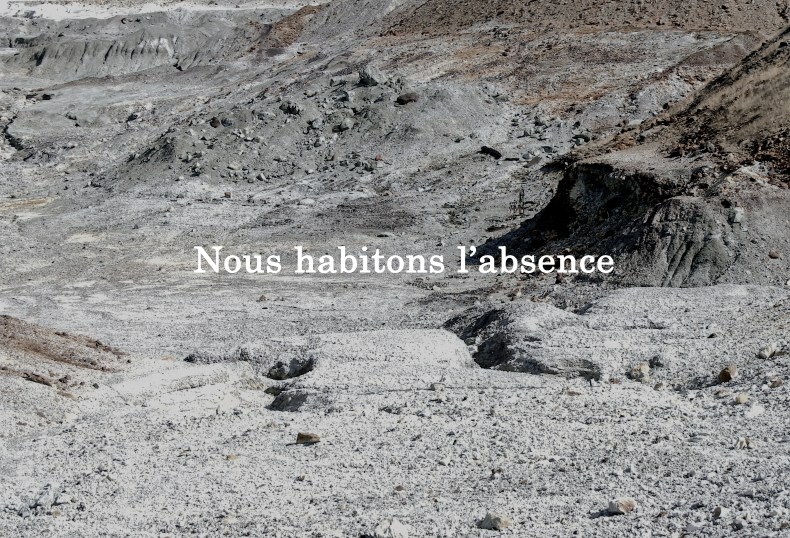
Inscriptions #012 (2016), Michel Houellebecq. Courtesy of the artist and Air de Paris, Paris
In so many ways, this is a terrible, terrible show. Indeed, if you were to assess it by the criteria of any normal art exhibition, you could tick every box in the hatchet-job checklist. It is ponderous and overlong, filled with half-baked, shoddy exhibits. It is transparently megalomaniacal, the brainchild of a dilettante indulged by an art establishment and desperate for a little proxy provocation. It is, quite simply, ludicrous. But I can’t remember visiting any contemporary art exhibition that sticks in the mind quite like this one. For all its apparent cynicism, it provokes strong reactions and is by turns hilarious, dreadful, and even moving.
The exhibition is not a show ‘about’ Michel Houellebecq, but a show ‘by’ Michel Houellebecq. (Anyone familiar with the author’s oeuvre and public persona would raise an eyebrow at this: where the habitually self-reflexive Houellebecq is concerned, doesn’t this mean the same thing?) Across the vast spread of gallery space, the show explores his obsessions, from sexual hierarchy to the morality of leisure, to man’s reconciliation with mortality. In other words, The Big Stuff.
The author of seven novels including the Goncourt-winning contemporary-art satire The Map and the Territory, Houellebecq has dabbled in other cultural fields before. He has recorded a (surprisingly good) pop album, starred in and directed films, and contributed an essay to a Thomas Ruff catalogue. He has also become a one-man PR titan, his every misanthropic utterance monopolising the culture sections of the Francophone press.
He is, as he told the FT earlier this year, ‘a little bit a star’ – an unholy hybrid of Céline, Andy Warhol, and Kim Kardashian. And this cantankerous, politically questionable crank is without doubt France’s favourite public intellectual. If Bernard-Henri Lévy can put an art exhibition together (as he did in 2013), why can’t Houellebecq?
The first few galleries of ‘Rester Vivant’ present us with dozens of Houellebecq’s photos. The palette here is a standard subdued grey, the subject matter – the Parisian banlieue, the port at Calais, the obsessively ordered expanse of the French countryside – loaded to the point of exasperation. A few photos are accompanied by the sort of numbskull text we saw running across the opening image. ‘The blood of small mammals,’ reads a phrase printed over an image of rust-coloured water in an arid landscape; another depicting a deserted seashore tells us that ‘the dead are clothed in blue’.
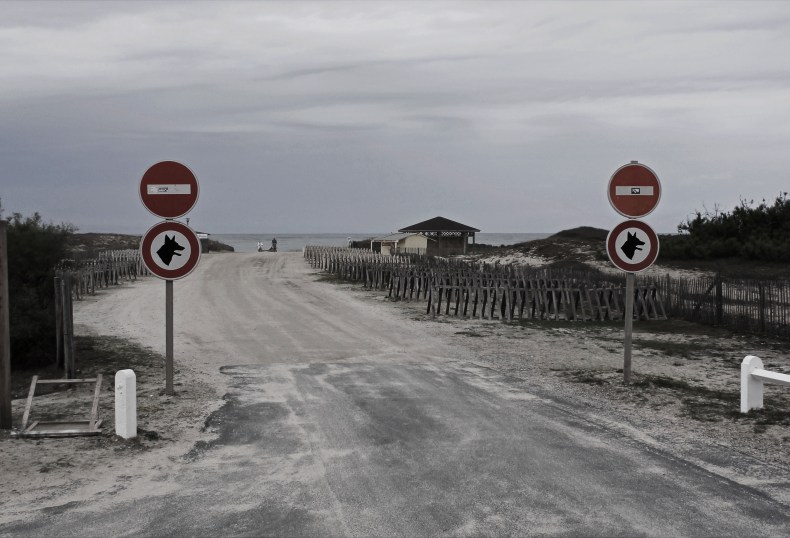
France #017 (2016), Michel Houellebecq. Courtesy of the artist and Air de Paris, Paris
This, like so much else on display here, is pure self-parody. In one room, we see a film directed by Houellebecq in which apparently identical women perform cunnilingus on each other in a sylvan idyll. In another, presumably a nod to the author’s bit part in The Map and the Territory, a small reliquary made up of empty Coca-Cola cans houses a skull bearing the inscription ‘Michel Houellebecq: Écrivain, 1958–2037’. Damien Hirst (who was a minor character in that novel), eat your heart out.
A gallery devoted to the subject of leisure is plastered in postcards from tourist destinations around France and soundtracked by warped elevator music. Another, decked out like a high-end 1970s boutique, presents a series of posed photos of models in various states of undress. It makes your skin crawl. The room filled with naive, expressionistic paintings by Robert Combas, inspired by Houellebecq’s poetry, is simply…dreadful.
It may seem that Houellebecq has truly fallen foul of his own mythology. If this were an earnest, run-of-the-mill contemporary art exhibition, I wouldn’t hesitate to stick the knife in at this point. Yet, given that Houellebecq isn’t trying to be taken seriously as an artist or curator (or at least, I hope he isn’t), as a viewer, I wanted more more. Somehow the cumulative effect of all this dross is completely mesmeric.
As with his novels, the exhibition is redeemed from the abyss of solipsistic miserablism by the rich strain of deadpan humour that runs through his work. Creating knowingly bad art is perverse, but Houellebecq has done so with great charm and, I think, without ironic intent. The more agreeable side of his persona permeates even the worst galleries here. The chain smoker has even provided a fumoir as ‘a fraternal thought for my fellow addicts’.
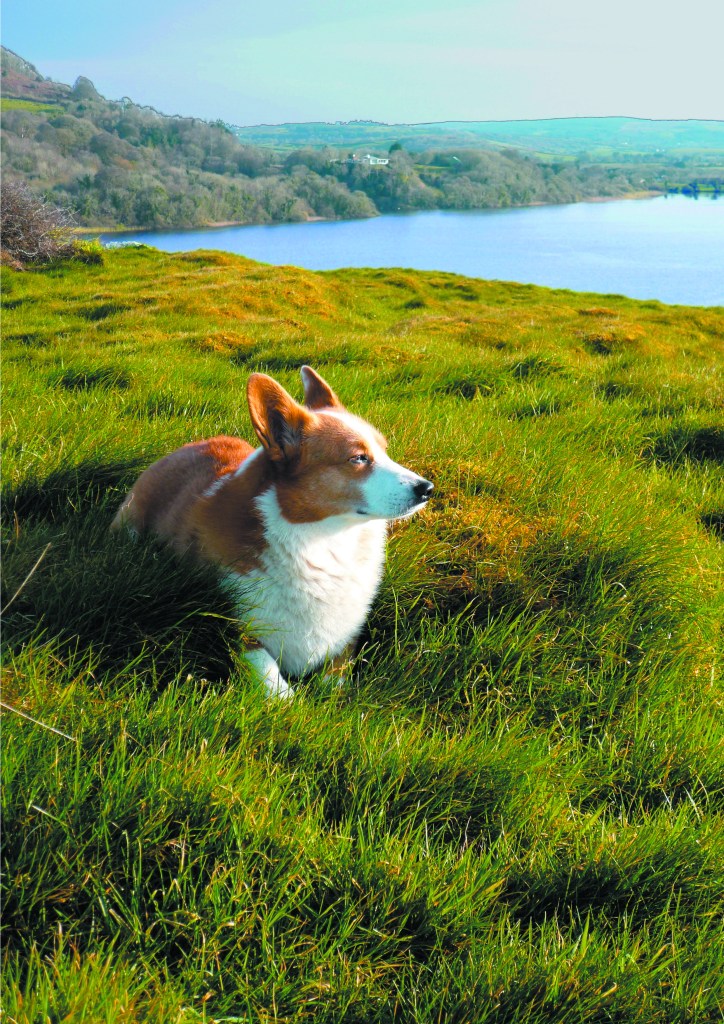
Irlande 1 (n.d.), Michel Houellebecq, Courtesy of the artist and Air de Paris, Paris
This baffling logjam comes to an end with a show within a show, which is dedicated to Houellebecq’s late corgi, Clément. It is one of the most extraordinary installations I’ve ever seen. An image of the unfortunate mutt, who died in 2011, is plastered across Paris’s billboards. The dog lies bathed in sunlight, overlooking the cliffs of the Irish coast, staring into the unseen distance. Houellebecq describes it as ‘call to confronting eternity fearlessly’. Like the photo itself, this description is both supremely banal and (given that the dog is dead) extremely touching.
Cutesy watercolours of Clément by Houellebecq’s ex-wife Marie-Pierre line the walls of the room, while in a vitrine at the centre of the room we see a selection of the dog’s toys, marked with the imprint of its teeth. In an annexe, a slideshow displays the author’s photographs of Clément, set to A Machine for Loving, an Iggy Pop monologue inspired by Houellebecq’s novel The Possibility of an Island.
‘The room devoted to Clément is undoubtedly the most personal in the entire show,’ Houellebecq has said. ‘[Marie-Pierre and I] didn’t have any children but we had Clément.’ It is an overwhelmingly sentimental display and, for a half a second, I doubted its sincerity. And then I felt tears start to roll down my cheeks.
‘Michel Houellebecq: Rester Vivant’ is at the Palais de Tokyo from 23 June to 11 September.
Unlimited access from just $16 every 3 months
Subscribe to get unlimited and exclusive access to the top art stories, interviews and exhibition reviews.

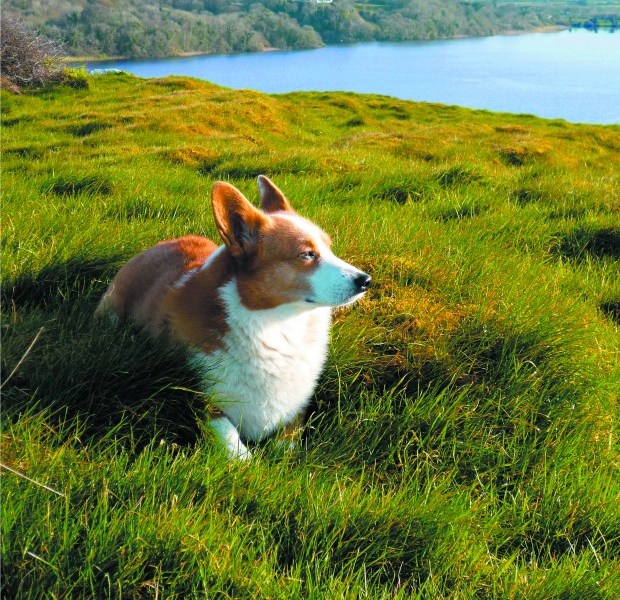
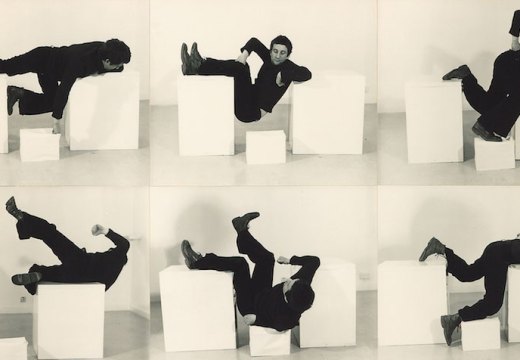
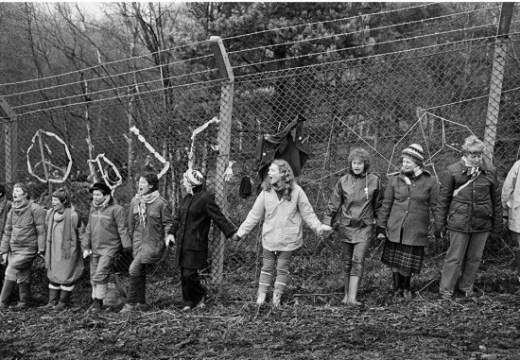










![Masterpiece [Re]discovery 2022. Photo: Ben Fisher Photography, courtesy of Masterpiece London](http://www.apollo-magazine.com/wp-content/uploads/2022/07/MPL2022_4263.jpg)
Why are fathers so absent from art history?